
榍石(钛铁矿)宝石:含义、价值和信息
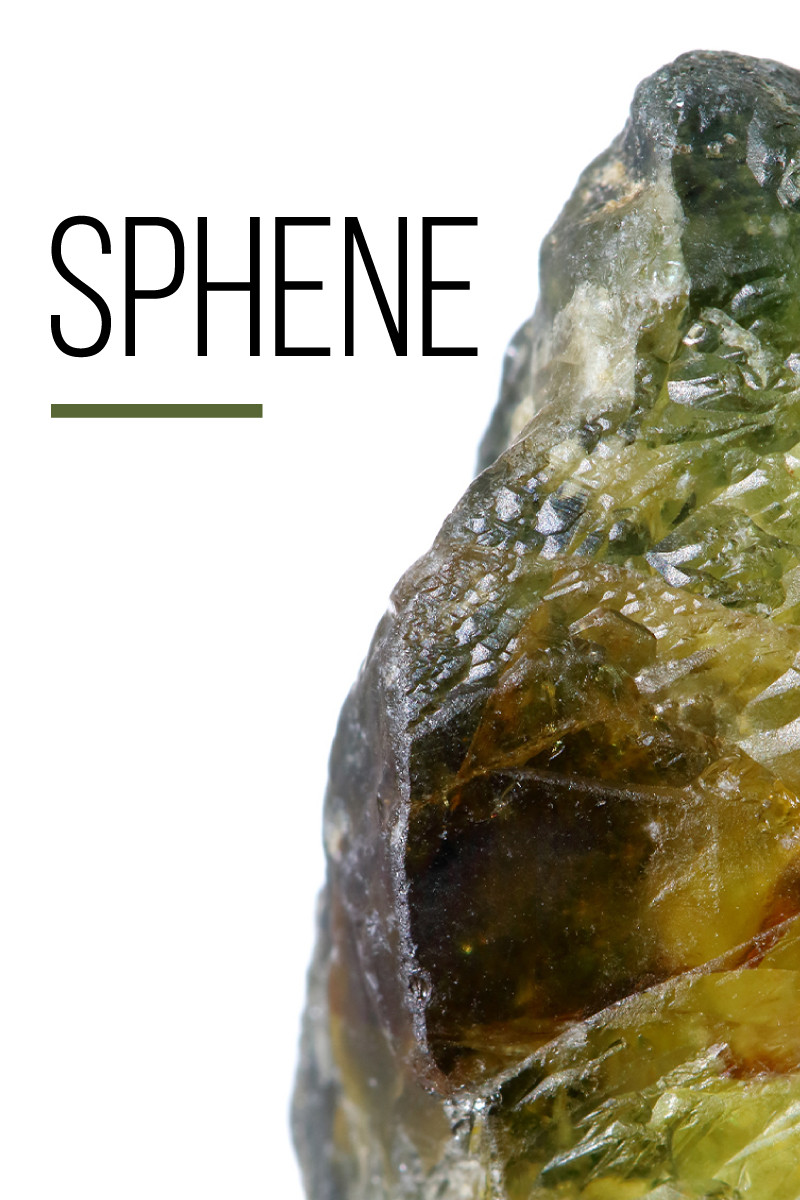 榍石,又称钛铁矿,是一种稀有宝石,因其光泽略低于钻石,而闪耀的色彩却远胜钻石,深受收藏家的喜爱。那么,榍石是宝石吗?不是,榍石是一种半宝石。
榍石,又称钛铁矿,是一种稀有宝石,因其光泽略低于钻石,而闪耀的色彩却远胜钻石,深受收藏家的喜爱。那么,榍石是宝石吗?不是,榍石是一种半宝石。
榍石是什么颜色?它通常呈亮黄绿色,但颜色范围从无色到黑色。不过,在光线下转动宝石,你会看到不同的颜色——甚至会闪现出彩虹般的光芒!
想看看榍石珠宝吗?快来探索榍石宝石的含义、治愈功效、价格等等!

什么是榍石?
榍石是富含钛元素的榍石,也是唯一用于制作宝石的种类。没错,榍石不仅仅是一个同义词,它本身也是一个矿物家族。
除了宝石,榍石还有什么用途?榍石可以作为二氧化钛矿石开采,用于制作颜料。
科学家还将钛铁矿用作地质年代仪(通过放射性衰变测量地质历史的工具)和温压计(用于测量岩石形成过程中的压力和温度的矿物)。
等等,榍石有放射性吗?有轻微放射性。经过打磨或抛光的榍石是安全的,而原石在短时间内是安全的。
榍石是橄榄石更实惠的替代品。因此,你可以用榍石代替橄榄石作为八月诞生石或16周年结婚纪念石。榍石本身也是天秤座、射手座和金牛座的星座石。

榍石规格和特征
榍石是一种钙钛硅酸盐。榍石中几乎总是含有铁和铝,以及铈、钍和钇等稀土元素 (REE)。
稀土元素可以赋予榍石“放射性”的亮绿色色调。然而,由于铁含量通常过高,榍石无法发出荧光。
一些榍石矿物是由铈变质而成的。变质作用是指放射性物质分解晶体结构,使石头变成非晶态。
所有榍石的矿物特性如下:
莫氏硬度:5-5.5
颜色:通常为黄绿色、黄色、绿色或棕色;可以是无色、蓝色、红色、灰色或黑色;颜色分区常见
晶体结构:单斜
光泽:树脂光泽至亚金刚石光泽
透明度:透明至半透明;有时不透明
折射率:1.84-2.11
密度:3.45-3.60
乳沟: 一般到良好 [110]
断口:贝壳状
条痕:红白色、粉红色或白色
多色性:透明宝石的多色性为中到强;三色性根据宝石的颜色而不同,但通常为浅黄色、橙棕色和棕黄色;一些蓝色水晶具有无色至蓝色的二色性
光学效果:很少变色
一些榍石的属性(和类型)根据地点的不同而略有不同。
 图片:铬榍石品种
图片:铬榍石品种
榍石的种类
目前没有官方的榍石品种,但我们会重点介绍您在购物时可能会看到的两种非官方类型:
铬榍石:珍贵的祖母绿品种,由铬制成,主要产自美国加利福尼亚州的下加利福尼亚半岛
Capelinha Sphene :产自巴西 Capelinha 的极为稀有、高品质、青柠绿色品种
从形而上学角度来看,sphene 的含义是什么?
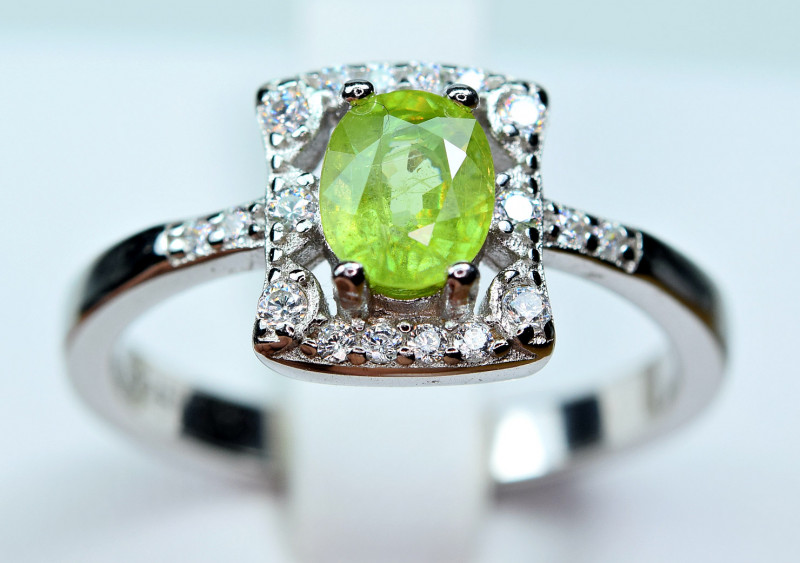
榍石的意义和历史
榍石象征着知识、创新和神圣的光芒。至于榍石的精神意义,它是灵媒、占星家和塔罗牌占卜师的护身符。
“榍石”一词指的是钛的含量。“榍石”源于希腊语“ sphenos ”,意为“楔子”,因其晶体呈楔形。
那么,为什么榍石被称为钛铁矿(titanite)呢?简而言之:矿物学家通常更喜欢使用“钛铁矿”(titanite),而宝石学家则更喜欢使用“榍石”(sphene)。
稍长的答案与这块石头的历史有关。
瑞士科学作家兼研究员马克·奥古斯特·皮克泰于 1787 年在德国巴伐利亚森林附近首次发现了榍石。然而,直到 1795 年,德国化学家马丁·克拉普罗特才对这种石头进行了首次正式描述并命名。
1801年,法国著名矿物学家雷内·豪伊(Rene Hauy)创造了“sphene”这个名称。这两个术语后来都被广泛使用,但“sphene”更受欢迎。
然而,国际矿物学协会 (IMA) 在 1982 年声称只有“钛矿”才是正确的,并否定了“榍石”这个名称。尽管如此,即使是同行评审的期刊也允许作者使用“榍石”这个名称来指代这种宝石。
渐渐地,“钛铁矿”在矿物学中变得越来越常见,而“榍石”在宝石学中变得越来越常见。
无论您使用哪个名称,这种石头仍然具有相同的治疗功效,我们将在下文中介绍!

榍石的治疗功效
宝石因其颜色、能量和历史而具有独特的疗愈功效。像榍石这样的 绿色宝石可用于心轮疗愈、显化成功以及连接自然。
从精神层面来说,人们通常建议学生或研究人员佩戴榍石,因为它可以增强注意力、记忆力和信息处理能力。
还有哪些其他的榍石水晶治疗用途?
身体康复
据称,蜈蚣的一些益处包括帮助治愈骨折、消除充血和增强免疫系统。
情绪疗愈
人们认为,榍石可以帮助你处理你的感受、整理你的思绪并平衡任何极端的情绪。
有没有人正在为单身生活而苦恼?如果你觉得自己没有成就感,Sphene 可以帮助你降低对恋爱关系的情感渴望。相反,它能帮助你接受真实的自我,并鼓励你自爱。
榍石的精神价值?绝对很高!但榍石作为宝石的价值又如何呢?

榍石宝石属性
与大多数宝石一样,榍石的价值取决于“4C”标准。其中,最有影响力的是净度、颜色和克拉重量,其次是切工。然而,这些因素也可能相互影响——例如,即使切工优良,浓郁的体色也可能掩盖其闪耀的光芒。
要了解更多信息,我们先来了解一下颜色!
颜色
绿色、黄色和棕色是最常见的榍石颜色,其中黄绿色最为常见。大多数榍石标本呈现出色域渐变。
流行的色调都源于稀土元素和铁元素的含量——低铁元素会呈现黄色和绿色,而高铁元素则会呈现棕色和黑色。然而,最浓郁的绿色铬榍石的颜色则源于铬元素。
你很少会发现产自阿富汗或巴基斯坦的变色榍石。有些榍石在日光下会从黄绿色或绿色变成白炽灯下的棕橙色,因为它们含有钒。还有一些榍石会从黄绿色或棕绿色变成橙黄色。
什么颜色的榍石最值钱?铬榍石最稀有,也最值钱。一般来说,浅色(例如绿色、黄色和浅橙色)比浓色榍石更有价值,因为浅色最能体现宝石的色散。
色散,又称火彩,是指光线在宝石上反射后,分裂成彩虹般的颜色。换句话说:彩虹般的光芒!榍石的色散值为0.051,远超钻石(0.044)。
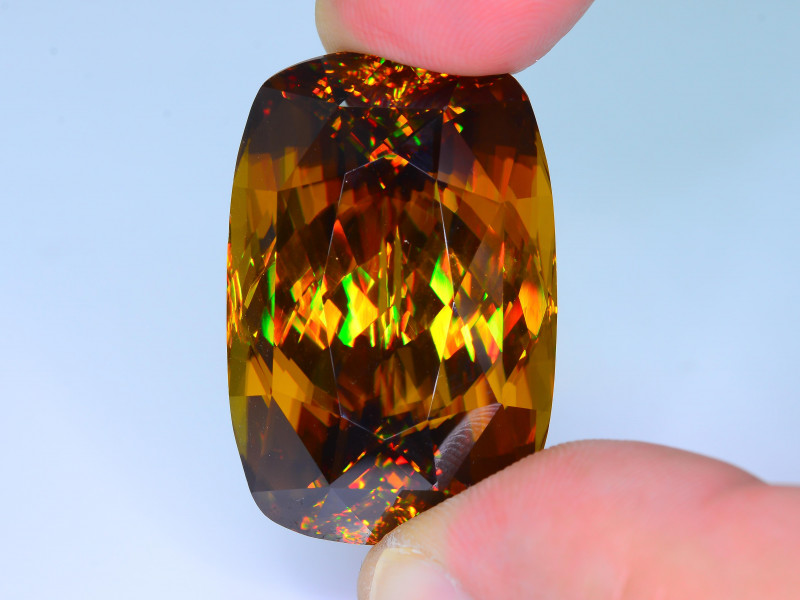
切
榍石的硬度只有中等,因此切割起来可能比较棘手。虽然抛光可以使其呈现出钻石般的光泽,但这个过程比切割更加困难。但技艺精湛的人可以创造出华丽璀璨的珠宝。
与颜色一样,榍石的切工也会影响其色散效果。圆形或公主方等明亮式刻面切割最适合展现火彩。对于颜色较深或透明度较低的宝石,像祖母绿这样的阶梯式切割也同样美观,但价值可能略低。
明晰
榍石几乎总是具有可见的内含物,因此其净度等级为 III 型彩色宝石。
铁、铝和稀土元素是常见的内含物。常见的纹理包括针状、指纹状、羽状或共生晶体。
您可能会看到一些榍石(尤其是在放大镜下)出现浑浊,但这并非由于内含物造成的。榍石具有高双折射性,这意味着反射光会分裂成两束。这种反射使刻面看起来是双重的,从而形成类似于橄榄石和锆石的模糊内部外观。
克拉重量
大多数榍石的重量都在1-2克拉左右。即使重量达到5-10克拉,也很少能达到宝石级的净度,因此任何超过5克拉的优质净度榍石都价格不菲。
某些产地出产的楝石比其他产地的更大。缅甸的一些楝石甚至重达20克拉以上!印度和马达加斯加的刻面楝石通常分别重10克拉或15克拉。而巴西和斯里兰卡的楝石通常分别轻于5克拉或10克拉。
治疗
有些榍石经过热处理,颜色变成红色或橙色。处理通常会降低价值,因此应在出售前披露。
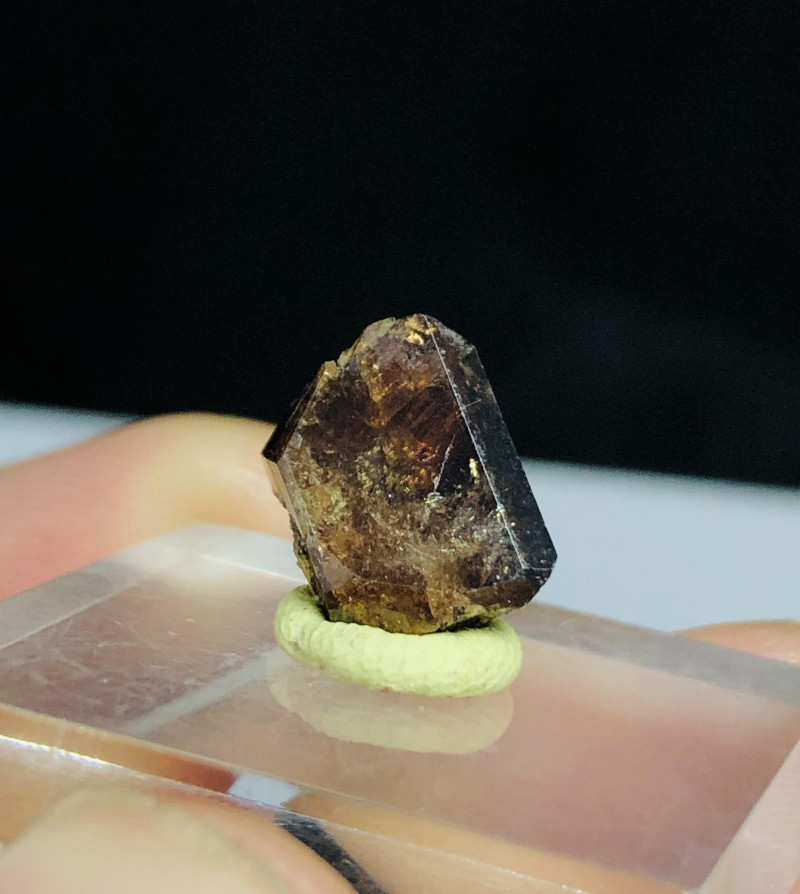
榍石的形成与来源
大多数榍石原晶较小,但这些微小晶体分布于各种火成岩和变质岩中。榍石作为副矿物产出,占岩石总量的不到1%。
在变质岩中,榍石生长于片岩、夕卡岩和片麻岩的空洞中。一些含有榍石的火成岩包括花岗岩、伟晶岩、闪长岩和正长岩。
随着火成岩从岩浆中缓慢冷却凝固,携带其他元素的水会沉淀到岩浆的空隙中。水蒸发后,剩余的元素结晶成榍石。
这些火成岩会在压力、热量和富含矿物质的水的作用下发生变质,从而改变岩石的成分。这些条件还会将岩石中的一些晶体转变为榍石。
采矿地点
榍石的主要产地是北美和马达加斯加。许多地区都以其特有的榍石而闻名。下面,我们将列出所有榍石的产地及其已知的榍石种类(如有):
阿富汗(有些变色)
巴西(通常透明;孪生;黄色到绿色;无双折射;Capelinha sphene)
加拿大(黑色和棕色)
中国
印度(绿色、黄色和棕色;世界上最大和最亮的地区之一)
意大利
马达加斯加(黄色至绿色;孪生;透明;有时很大;双折射率较低)
墨西哥(铬色、棕色、黄棕色;长达四英寸;双折射性更高)
缅甸(有时很大)
巴基斯坦(部分变色)
俄罗斯
斯里兰卡(蜜黄色、深棕色和黄绿色;双折射率最高)
瑞士
美国(阿拉斯加;缅因州;纽约州;加利福尼亚州 - 铬)
除了产地之外,价格也是购买时需要考虑的一个重要因素。你对榍石的预期价格是多少?
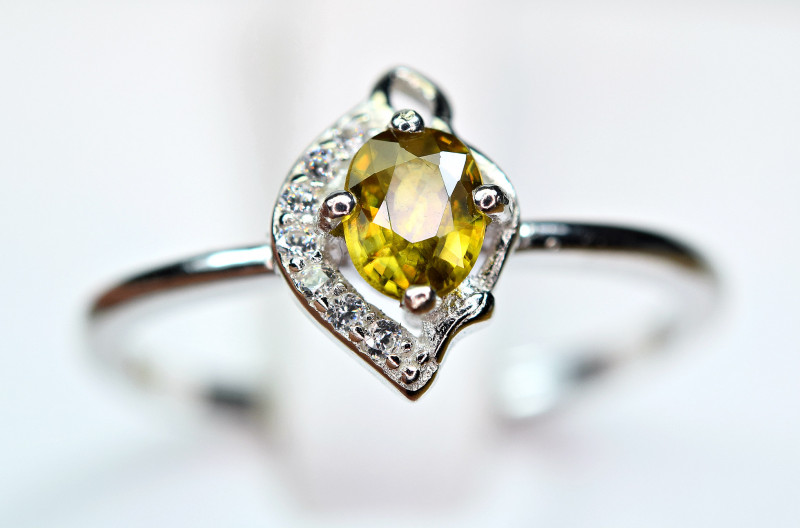
榍石宝石的价格和价值
榍石的价格比较合理,与碧玺差不多。最贵的是刻面榍石,色散性好,颜色鲜艳,净度也不错。
零售价方面,约50%的刻面榍石宝石售价在100至1,000美元之间,20%的售价在50至100美元之间,15%的售价在20至50美元之间。这些零售宝石中,近75%的重量为1至5克拉。
批发价格将会更低,我们将在下面进行详细说明。
总体而言,色散性好的刻面铬榍石价格最高,1至10克拉的宝石批发价为每克拉50至600美元,20克拉以上的宝石批发价为每克拉200至1,000美元。刻面变色铬榍石的价格约为每克拉190至475美元。
其余颜色刻面宝石的每克拉榍石价格为:
变色:每克拉 190-475 美元
黄色:每克拉 70-320 美元(但有些达到每克拉 650 美元)
黄绿色:每克拉 30-70 美元
绿色(非铬) :每克拉 30-250 美元
橙色:1-10克拉,每克拉50-75美元
现在,榍石凸圆形宝石的价格为:
变色:每克拉 80-120 美元
黄色:每克拉 1-40 美元
绿色:每克拉 5-60 美元
棕色:每克拉 0.30-9 美元
最后,我们有粗糙的榍石,每克拉价格为 0.15 至 5 美元,不过一些稀有样本的价格达到每克拉 20 美元。
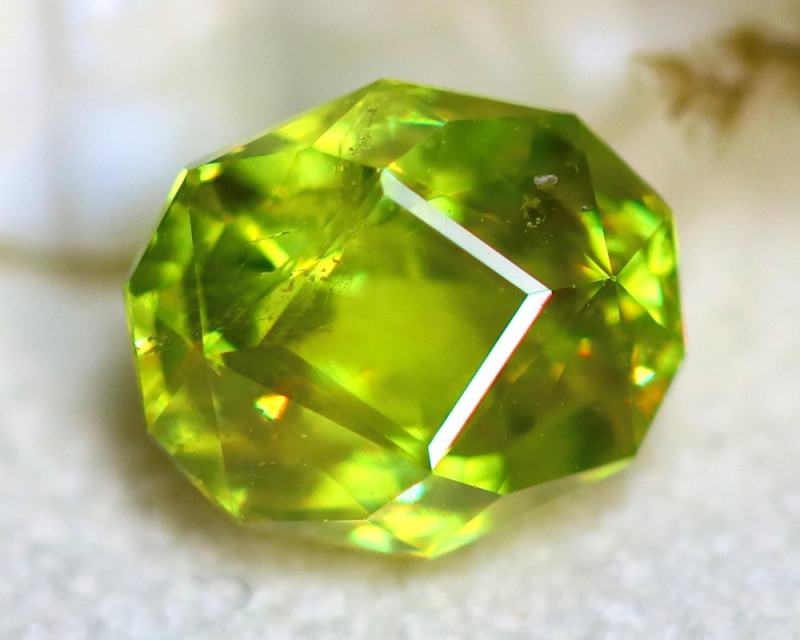
榍石的保养和维护
在我们讨论如何保护榍石的安全之前,让我们先来了解一下辐射方面的问题,以确保您的安全。
任何经过加工或抛光的宝石均可安全处理。由于榍石的放射性较低,因此原始标本在短时间内处理是安全的。
鉴于这种宝石的硬度和脆性相当低,因此不建议选择像榍石戒指这样的易碎珠宝。
其他珠宝,例如水晶项链或耳环,可以通过保护性镶嵌和偶尔佩戴来避免损坏。此外,耳环和吊坠非常适合捕捉光线,展现璀璨的光芒!
只能用蘸有温水和温和肥皂的软刷清洁镜面。请勿使用超声波或蒸汽清洁器。
让 Sphene 远离:
热
酸
出汗过多
硬撞击
其他宝石(单独存放)

想要一颗前所未有的宝石吗?
无论您称它为钛铁矿还是榍石,有一件事是真的:这种宝石是一种璀璨的宝石,适合在任何收藏中展示 - 或搭配华丽的服装!
从朴实的波西米亚棕色吊坠到超凡脱俗的鲜绿色耳环等等,您一定会成为任何场合的焦点!
搜索Gemstone Encyclopedia
最新的文章
彩虹格纹日光石是一种长石,由于内部含有各种包裹体,呈现出三种绚丽的光学效应。它绚丽多彩的光泽和格纹图案使其成为收藏家梦寐以求的珍宝!
12th Jan 2026
文章分类
How To's is where you will find helpful articles from gem Rock Auctions on how to cut gemstones, select gemstones and buy gemstones.
9文章数

